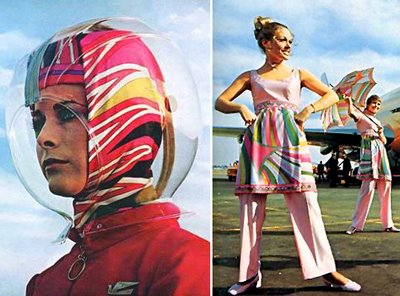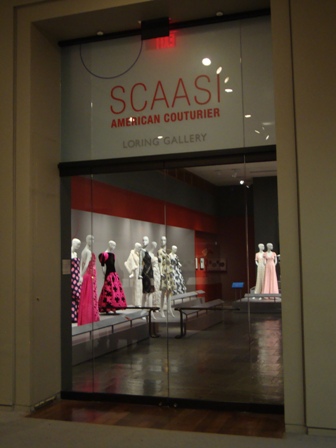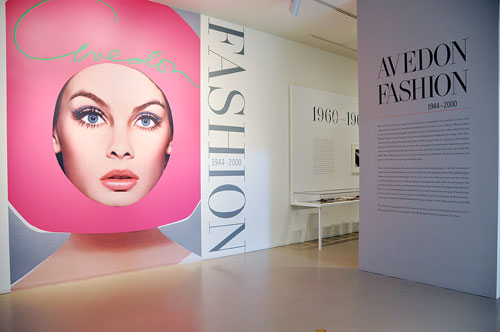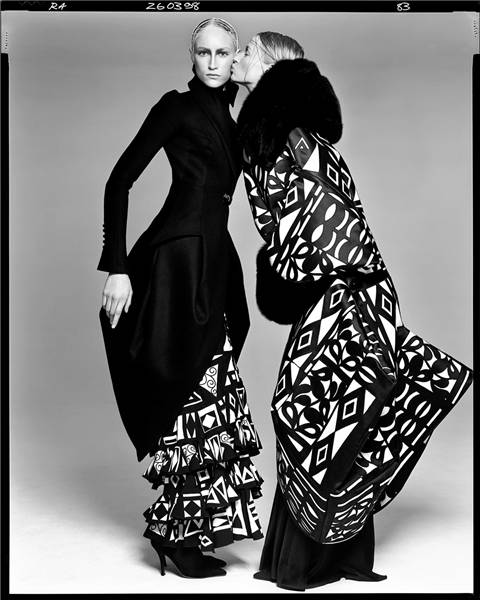Posts tagged Harper’s Bazaar
Let’s Go To the Beach, Let’s Get Away…
Jul 25th
When heading to the beach this summer, be sure to do it in style. Here are eight essentials for a fashioniSTA’s seaside getaway!
 1. Fun, Flattering Swimwear
1. Fun, Flattering Swimwear
There are endless possibilities of swimwear styles each year. We recommend going for a classic, flattering suit with a bit of a twist- whether its a pop of color or fun print, like the ones above all from J.Crew.
2. Complimentary Cover-Up
Pair your swim suit with a pretty cover-up. We love this one from DVF. Not only is a Diane von Furstenberg print always in style, but this tunic can take you from the beach, to the beach bar or restaurant, to running errands around town- comfortable, effortless and chic.
3. Beach Flip-Flops
Havaianas are a summer must-have for fashioniSTAs- the most comfortable and practical rubber flip-flop. They come in a variety of colors and prints, and you can even design your own to perfectly show off your summer style and personality.
4. Tory Tote
It’s no secret that we love Tory Burch at STA, so when it’s time to tote all your summer goods to the beach, we favor a Tory Burch carry-all.
5. Sun Protection
Keep your skin moisturized and protected with a good SPF.
6. Beach Bedding
Nothing says summer like a colorful Missoni knit, so when you’re laying on the beach, sunning in the sand, sun in style with a Missoni print beach towel.
7. Quality Reading Material
Vogue, Harper’s Bazaar, WWD, Glamour, Elle, etc…oh and Fifty Shades of Grey, obviously.
8. Summer Tunes
Currently on the fashioniSTA summer playlist:
Robyn “Hang With Me”
Ellie Goulding “Lights”
Josh Turner “All Over Me”
New Kids On The Block “Summertime”
Avicii “Silhouettes”
Vanessa Carlton “White Houses”
Zac Brown Band “Toes”
What’s your beach essential? Tell us on Facebook or Twitter!
~Lisa, fashioniSTA
Spotlight On: Emilio Pucci
Oct 20th
Nothing says “mod” more than the kaleidoscope-like prints of Emilio Pucci. From the first jewel-colored prints (inspired by motifs from the Italian Renaissance) to the ultimate simplicity of little silk jerseys shifts, Pucci was one of the hottest looks of the early ’60s. Pucci fans included some of the decade’s most photographed women—Elizabeth Taylor, Marilyn Monroe, Lauren Bacall, and Jacqueline Kennedy Onassis—which helped bring the brand into the public eye and gave it its jet-setting reputation. Monroe’s estate alone held enough vintage Pucci for its own display via Christie’s Auction House.
Pucci History The evolution of the Pucci label is tale of innovation with roots steeped in regality: the brand’s founder, the Marchese Emilio Pucci di Barsento, was a charismatic aristocrat whose lineage extended back to the 14th century. His foresight into fashion, however, was anything but traditional. Pucci was one of the pioneer brands to bear a logo, and the label was one of the first to diversify into interiors, athletic wear and accessories. It introduced free-moving, lightweight fabrics, pop art prints, and new color palettes into womenswear. Looking at the early designs of Pucci today, it is astonishing how contemporary it seems; the featherlight dresses cut as simply as t-shirts and the silk shirts in brilliantly colored jewel prints (designed to be worn with simple white pants or jean) are of today, not yesterday.
A Skiing Start The first clothes designed by Pucci were for the Reed College skiing team — hardly surprising as he was a member of the Italian Olympic ski team. However, his designs came to wider attention in 1947 on the slopes of Switzerland when skiwear that he had designed was photographed by a reporter working for Harper’s Bazaar. He was quickly asked by the magazine’s editor to design more ski ensembles for a story on European Winter Fashion, which ran in the winter 1948 issue.
Jet-Setting Style After his published Bazaar exposure, Pucci used his newfound recognition to set up a haute couture house on the beautiful Italian resort isle of Capri. By the 1950s, his boutique was catering to wealthy sophisticates, heiresses and movie stars buying his “Capri pants,” silk scarves and lightweight separates. By the mid-60s, the label was synonymous with the gilded lifestyle of an international jet-set. To further strengthen his image with the excursionist elite, Pucci was hired by the Braniff International Airways to help update their image — Braniff was seeking to create, as their ad cleverly stated, an “End of the Plain Plane.” Pucci would end up designing seven complete outfits for Braniff hostesses and pilots between 1965 and 1977. These uniforms (examples seen below) became so iconic that by 1968 even Barbie had versions of his first four uniforms. These avant-garde creations were designed as individual components to be added or removed as weather dictated; among the more unusual innovations was a “bubble helmet” – a clear plastic hood worn by flight attendants on the tarmac to protect their hairdos from rain and the blast of jet engines.  What began with ski garb has expanded into an international empire, with almost every piece carrying the brightly colored, often swirly prints of his original 20th-century style. Today, more than sixty years later, the house remains as vibrant as ever — celebrities such as Victoria Beckham, Kylie Minogue, Isabella Rossellini, Elizabeth Hurley, and Jennifer Lopez wear Pucci creations. Although Pucci’s fabulous prints defined a jet-setting generation in the ’50s and ’60s, his influence on textiles and prints is still very relevant in today’s couture. Want some Pucci in your life? Check out these picks from STA:
What began with ski garb has expanded into an international empire, with almost every piece carrying the brightly colored, often swirly prints of his original 20th-century style. Today, more than sixty years later, the house remains as vibrant as ever — celebrities such as Victoria Beckham, Kylie Minogue, Isabella Rossellini, Elizabeth Hurley, and Jennifer Lopez wear Pucci creations. Although Pucci’s fabulous prints defined a jet-setting generation in the ’50s and ’60s, his influence on textiles and prints is still very relevant in today’s couture. Want some Pucci in your life? Check out these picks from STA:
Terrycloth Tunics, size 6 — $179 apiece at STA HVD SQ
Pucci Pumps, size 7.5 — $79 at STA Charles St.
Pucci Canvas Bag — $179 at STA Charles St.
~Kim, FashioniSTA/Store Manager Harvard Square
SPOTLIGHT ON: RICHARD AVEDON
Aug 27th
~ Boston Museum of Fine Arts, “Avedon Fashion: 1944-2000″ ~
For almost sixty years, Richard Avedon (1923-2004) brought fashion to life via his artful camera. His photos mayhave started out as advertisement for Dior, Chanel, or Versace, but they ended up as events. The Boston Museum of Fine Arts is currently hosting the traveling exhibit “Avedon Fashion: 1944-2000″, which is the first comprehensive survey of Avedon’s fashion photography since 1978. Avedon has been heralded in the fashion industry as a pioneer, one who revolutionized the work of fashion photographers. Using a photojournalist’s approach, Avedon replaced formal, mannequin-like studio poses with dynamic images of models who are full of expression, often on location, and always in motion.
Images are grouped by decades and presented to show his
progression as a photographer and artist. Avedon’s volume of work was huge — the exhibition highlig
hts about 140 objects. Original prints, negatives, and notebooks are displayed alongside Bazaar issues from the 1940’s. Separated into three galleries chronicling the periods 1944-1949, 1950-1959, and 1960-2000, we follow along as Avedon’s technique (not to mention the direction of fashion itself) evolves.
Richard Avedon was only 21 when he sold his first photo for $7.50 and was soon working for Harper’s Bazaar. They sent him to Paris, where he made his reputation, reconstructing the pre-war glamour of the city. By the late ’50s Avedon was arguably the most famous photographer in the world. The 1960s brought a youthquake of mod culture and Avedon certainly captured the tenor of the times. He was the first prominent photographer to use multi-racial models, turning Donyale Luna into the first major African-American high-fashion model in U.S. fashion magazines.
The 1970s saw Avedon continuing to reflect the energy and liberated styles of the times, photographing models in mini dresses and menswear-inspired clothing. By the 1980s, until his departure from the magazine in 1988, Avedon shot nearly every cover for Vogue; after 1990, Avedon worked exclusively on ad campaigns and catalogues for Gianni Versace. In 1992, he became the first staff photographer for The New Yorker, where he contributed several fashion essays. Avedon continued to dominate the photographic world until his death in 2004.
“Avedon Fashion: 1944-2000″ will continue to be on display through January 17th, 2011 — trust us fashioniSTAs when we say it is a highly recommended addition to your itinerary. Check out this display while you can!
~ Kim, Manager Harvard Square, Second Time Around





